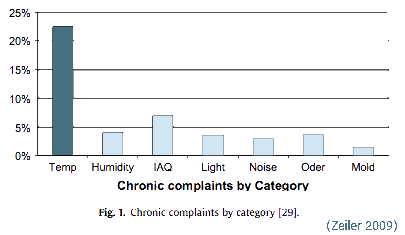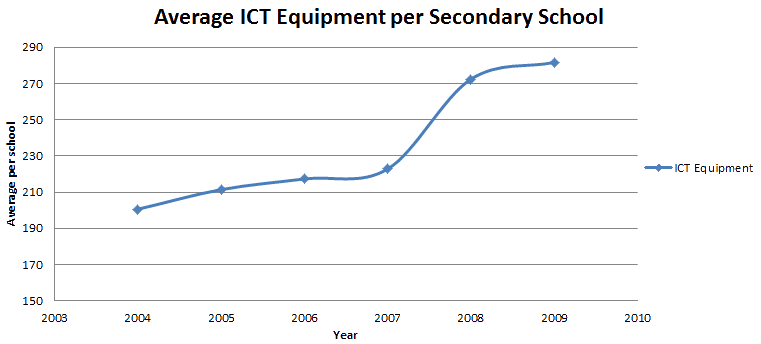
Legislation & Drivers Towards A Lower Carbon Future
Global Legislation
The Kyoto Protocol was enforced on 16 February 2005 by the United Nations Framework Convention on Climate Change. The UNFCCC currently has 192 countries as members, broken into three categories:
Annex 1 Countries
Industrialised countries and economies in transition
Annex 2 Countries
Subset of Annex 1, developed countries which pay for costs of developing countries
Developing countries
Not required to reduce emissions unless funded by an Annex 2 country
Thirty-seven industrialised nations committed to the protocol, including the EU and its member states. The protocol target is to reduce green house gases (GHG) to a safe level where adverse effects such as global warming do not become a problem to humanity; a 5.2% reduction in GHG was agreed from the 1990 level, emissions trading and clean development mechanisms were also adopted by the protocol.1
European Legislation
In December 2002, the EU decided to set more stringent energy targets for all its member states to help meet its Kyoto Protocol obligations. Many of these targets were set for the building sector, as this is where 40% of the EU final energy is used.2 The EU has set a benchmark for more sustainable construction. However it states that it is up to each member state to decide on their own minimum standards.2 With the addition of the 2008 ‘20-20-20’ legislation of reducing greenhouse gasses and primary energy consumption by 20%, and increasing renewable energy output to 20% by 20203, this will certainly influence the future of construction for each of the member states.
UK Legislation
In line with the EU’s 2008 ‘20-20-20’ policy, the UK Government has set its own targets. An 80% decrease from the 1990 baseline year in carbon emissions by 20504, they have set these reductions in five year steps, which will cover the trajectory for the 2050 goal. The first step is a 34% reduction by 2020 from the 1990 baseline.4 The UK’s targets are the most ambitious and stringent within the EU. It is thought however that this may leave them in an uncompetitive position unless other EU countries set similar targets.
The UK construction industry has been targeted as one of the main areas for CO2 reduction due to its high emissions output, and its contributions to the UK economy.5 Changes include all new homes in England and Wales are to be zero carbon by 2016 and potentially all new non-domestic buildings to be carbon zero by 2019.6 For current buildings, meeting these targets will be very difficult, however, retrofitting and upgrading existing materials and appliances to more energy efficient equivalents is possible. Carbon zero by 2016 is a very ambitious target, which means major saving in all areas of CO2 emissions will have to be implemented; if successful it will enable the UK to become a low carbon economy. The UK legislation however, is dependent on EU legislation, meaning if the EU tighten its policies, then the UK needs to follow.4
"Improving energy efficiency is widely recognised as the easiest and most cost-effective means of reducing carbon dioxide emissions."5
Amendments in 2006 to part ‘L’ of the UK Building Regulations Act have helped improve energy efficiency by 40% since 2002.7 This has been through improvements to the fabric of the building, better insulation, a decrease in unwanted air filtration and more energy efficient heating and lighting systems as well as meeting target CO2 emissions. More amendments will need to occur to the Building Regulations Act if the 2016 and 2019 targets are to be met including further improvements in the buildings fabric.
UK Schools
Schools in the UK currently account for around 7% of CO2 emissions associated with the built environment.8 The Zero Carbon Task Force, set up by the UK Government has recommended that all new schools built after 2016 are net zero carbon. This target should be achieved by a series of incremental changes in the reduction of CO2.9 As of 2005, all major new builds and refurbishments need to meet BREEAM’s ‘Very Good’ assessment rating. With the need to decrease carbon emissions inevitable, fabric improvements must occur, meaning extremely low U-Values in walls, windows, floor and roofs, as well as low infiltration rates. Natural ventilation is also the preferred method of achieving the required air quality standards stated by the School Premises Regulations. Employing mechanical ventilation throughout an entire schools will be costly and energy intensive.10 Currently in many new build schools, large amounts of heat gains are given off in ICT rooms, significantly increasing the likelihood of overheating. To alleviate this, air conditioning systems are employed, adding to the energy consumption, facility costs and ultimately the CO2 emissions of the school.
Overheating In Schools
Better building envelopes and lower heat loss through the fabric improves energy efficiently significantly, however it also leaves a building more susceptible to overheating, especially in the summer months. Overheating in schools, like any other building, should be avoided as much as possible as it creates a poor internal environment for its occupants. This leads to drowsiness, loss of concentration and general discomfort. Overheating is a major problem in many schools today which leads to a poorer learning/working environment for the pupils and the teaching staff. Zeiler and Boxem write ". . . moderate changes in room temperature, even within the comfort zone, effect student’s abilities to perform mental tasks requiring concentration, such as addition, multiplication, and sentence comprehension".11
According to Building Bulletin 101, a document created by the Department for Education (DfES) to assist the design of ventilation systems in schools, overheating is defined by three criteria. These criteria apply outside the heating season and for the occupied periods of 9am to 3:30pm, Monday to Friday, from 1st of May to 30th September.10 The parameters are as follows:
- Internal air temperature should not exceed 28°C for any more than 120 hours (80 hours when school summertime holidays are taken into account)
- The average internal/external temperature difference should not exceed 5°C
- Internal air temperature should not exceed 32°C when space is occupied
Two of these criteria must be met at all times to show the school will not suffer from overheating.

Graph 1: Cronic Complaints By Category11
Information & Communication Technology Use In Schools
Heavy investment from government incentives as well as funding from local authorities have made information & communications technology (ICT) increasingly prevalent in our schools. The aim of this is not only to modernise our schools and teaching methods but also to equip pupils with the skill sets they will need in the workplace.12 This trend will only escalate in the future as ICT equipment not only becomes cheaper but also becomes more useful and reliant in the teaching curriculum. In a study by S.C. Kong introduces the idea of "Twenty-first century knowledge" observing benefits of individually assigned information technology.13 Students' improvements were noticed as teachers could monitor each student's progress digitally and tailor lessons to an individual. Kong continues, stating the students learned more through self-regulated, enquiry learning (research).

Figure 1: ICT Trends in Schools
ICT equipment found in today’s schools includes desktops, laptops, projectors, interactive whiteboards and printers. These devices not only drive up the schools energy demand, they also create additional unwanted heat in classrooms. In certain circumstances, this unwanted heat can lead to overheating. Heat output from ICT equipment varies considerably depending on the efficiency of product itself and how the product is being used. An average laptop of today’s standards (2011) will emit around 60 W of heat to the environment, however the more efficient a device, the less heat it will emit. This usually comes with a trade off in the price of the device.
Many schools being designed do not factor ICT equipment in as a major source of heat gains, with the exception of purpose build ICT rooms which include energy intensive cooling systems. One plausible scenario to occur in schools of the future is that ICT use increases to a point where every pupil has access, or has their own individual computer. If this scenario did occur, what would be the overall effect on the learning environment in the classroom with regards to overheating and discomfort levels. As ICT is now becoming a significant part of teaching it is recommended that ICT become an integral part of a schools planning and procurement policy.14
- United Nations Framework Convention on Climate Change. (1997) Kyoto Protocol.
- European Union. (2002) 2002/91/EC, European Directive for the Energy Performance of Buildings.
- European Union. (2008) COM (2006)454, Action Plan for Energy Efficiency.
- UK Government. (2008a) Climate Change Act.
- Plank, R J. (2005a) Sustainable Building Construction for Structural Engineers. The Structural Engineer 7th June 2005.
- UK Government. (2006b) Building a Greener Future, Towards Zero Carbon Development.
- UK Government. (2006a) Building Regulations, Conservation of Fuel and Power.
- Carbon Trust. (2009) Building stock emissions by sector.
- Department for Children, Schools and Families. (2009) Final report of the Zero Carbon Task Force.
- Department for Education. (2011) Building Bulletin 101: Ventilation for School Buildings.
- Zeiler, W. & Boxem, G. (2009) "Effects of thermal activated building systems in schools on thermal comfort in winter", Building and Environment, 44: 2308–2317
- Higgins, S. (2003) Does ICT Improve Learning & Teaching in School.
- Kong, S. C. (2009) "An empirical study of school-based planning for the use of information technology to improve the quality of education in the twenty-first century", Technology, Pedagogy and Education, 18: 3, 343 — 359
- Max Fordham. (2010) Energy Performance of Schools.








